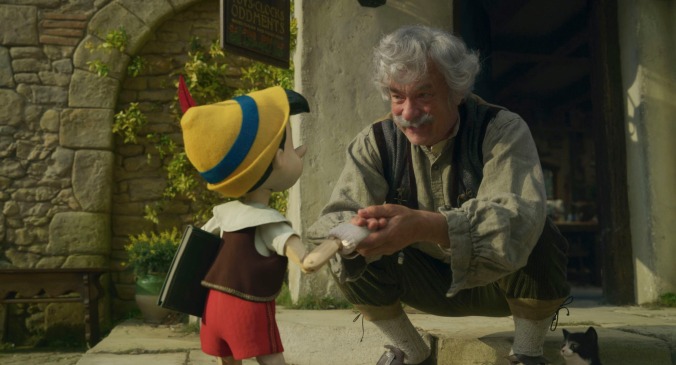In Pinocchio, bad creative choices clip this adaptation's strings
Not even Tom Hanks working at top form can save this live-action remake of Disney's animated classic

Contrary to the beliefs of social media lurkers unhappy with equivocating reviews of their favorite intellectual property, Disney does not pay critics, but the studio does frequently—and mostly nicely—ask them not to reveal plot points that could be deemed “spoilers.” It’s a request you might not even think was possible for, say, a mostly faithful remake of an animated film from 1940. In the case of Disney+’s live-action Pinocchio, however, director Robert Zemeckis makes choices so different and disastrous that they derail the entire movie. And of course this review will not reveal what they are, but they make the difference between a misguided cover version and a disastrous reinvention.
Live-action Disney remakes are best seen as the equivalent of Broadway musical versions: they add a few new songs, toss in some contemporary jokes, and throw a ton of money at special effects. Expecting the same kind of timelessness a second time is mostly a futile exercise: the state fair might book a talented cover band, but we’re listening to the original artist in our car or at home. This Pinocchio needed extra money or time, because the animation either looks unfinished or deliberately cartoonish, and the title character’s voice drastically changes from one scene to the next. Meanwhile, new songs by Alan Silvestri and Glen Ballard lack the snappiness and easy-rhyming wordplay of classics like “I’ve Got No Strings” or “When You Wish Upon A Star.”
Fans of Carlo Collodi’s original 1883 serialized children’s book likely never considered the Disney animated film its definitive adaptation, but rather one well-done interpretation that took plenty of creative license. The challenge other cinematic versions have subsequently faced is that Collodi’s source material requires considerable resources to do its spectacle justice—as well as a much more likable protagonist to marshal them around. As written, Pinocchio is a selfish brat who needs a dose of humility, and eventually receives it. Roberto Benigni’s 2002 version stuck closest to the text, even as he tested the audience’s suspension of disbelief by playing the wooden boy himself. Matteo Garrone’s 2019 take probably struck the best balance between fealty to the source material and cinematic spectacle, shying away (perhaps necessarily) from some of Collodi’s darkest moments but largely recreating what happens in the text with lavish makeup and effects.
Consequently, a new version changing things again is not that big a deal (or at least shouldn’t be a surprise) to longtime fans of the story, but it may bug those tethered to the 1940 take. Robert Zemeckis and Chris Weitz’s script pulls together some of the story’s more random elements—there’s more set-up to Geppetto going out in that boat, for example—but injects a level of self-awareness that feels anachronistic at best (Chris Pine jokes, anyone?). Other choices feel more perverse: Geppetto (Tom Hanks) literally builds Pinocchio to be a replica of his own dead kid. The story doesn’t delve into that idea much further, but it forms a creepy foundation for their future relationship.
